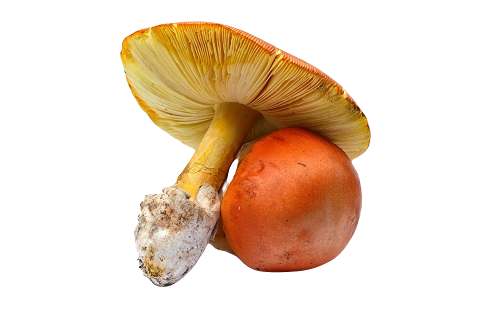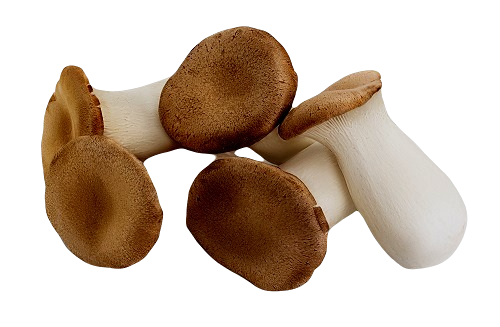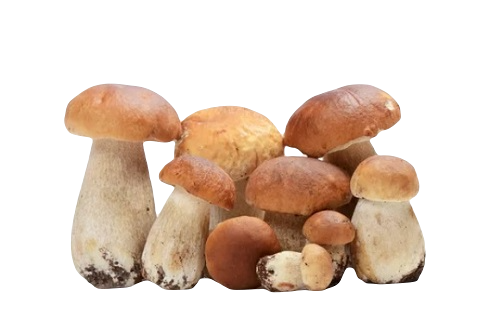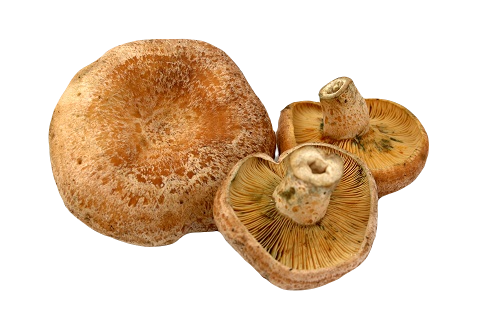Preparing an autumn full of wine
Get your personal wine cellar ready and take note of some suggestions to enjoy during the coming season.

The world of mushrooms is complicated for the uninitiated, so we assume that if you are not one of those who go out into the countryside with a basket and knife at the ready as soon as the temperatures start to drop in October, you will buy them in a market or in a specialised establishment. Don't panic, we won't be looking for rare species, but today we will review some of the most common mushrooms.
In previous posts we have already given you some pairing tips in our article "Preparing a wine autumn", although it is important to clarify that the perfect harmony will not only depend on the mushroom, but also on the rest of the ingredients with which we accompany it in the dish.
Amanita caesarea: this is a very attractive mushroom, with an intense orange "cap" and is often found in the Pyrenees, the central plateau, Valencia, Andalusia and Extremadura. With a dry and tannic taste, it can be eaten raw with oil, salt and lemon or as an ingredient in salads. It is also very suitable as a garnish for fish or meat dishes. The pairing, once again, will of course depend on the other ingredients with which it is prepared, but if eaten raw or in salads, it can harmonise perfectly with an amontillado wine or an old oloroso wine, which will help to soften those tannic nuances.

King trumpet mushroom: a mushroom with varied brownish tones, its flesh is elastic and has a pleasant aroma. It is present in practically all of Spain, although especially in some areas of Castilla y León. It has a very delicate flavour, between sweet and fruity, and is very suitable for grilling, in scrambled eggs, or as a filling in meat and fish roasts. If we eat it grilled, we can enjoy it with a young red wine in which the fruit is very present or even with a white wine, preferably fermented in oak.

Boletus edulis: it belongs to the white-fleshed boletus group and is widely used in Mediterranean cuisine. It has a very characteristic shape, similar to that of a sparkling wine cork. It has a pleasant flavour and aroma, slightly reminiscent of hazelnut, and is often used to prepare risottos and other creamy rice dishes. A fresh rosé wine, a sparkling wine or even a white wine of the Verdejo or Godello varieties, due to their acidity, will go well with this mushroom.

Saffron milk cap: this is one of the most sought-after and most common mushrooms in Spain. With a very characteristic "cap", when cut it gives off an orange-coloured watery substance (latex). It has a tangy aroma and a sweet flavour, making it ideal for roasting or to accompany meat stews. To harmonise with the latter, we can opt for a red wine of medium intensity, such as a crianza.

Black chanterelle: it is very recognisable due to its dark colour and its similarity to a small trumpet. There is little literature that refers to the origin of the name of this mushroom, which may lead one to think that it is a poisonous mushroom. Nothing could be further from the truth. With a very intense aroma and flavour, it is known by many as the "poor man's truffle". In fact, as is often the case with truffles, it is usually dried and sometimes turned into powder, as it is widely used in gastronomy as a condiment for meats, soups, salads, etc. The power of this mushroom allows us to use wines with a more intense flavour. Dive for wines with longer ageing to try to play with the tertiary nuances of the wine and the spicy aromas and flavours of the mushroom.

If you are a mushroom lover, you will surely be able to think of countless recipes in which to use the aforementioned species or others that are also typical of autumn, such as chanterelles, fairy ring mushrooms, the Yellow Foot, etc. Remember that the most important thing when pairing is that the flavour of the wine does not mask the taste of the product and vice versa: mushrooms with mild flavours will combine perfectly with lighter, fresher wines and those mushrooms with more intense sensations on the palate will require more powerful recipes. A golden rule that is hard to go wrong with.
Get your personal wine cellar ready and take note of some suggestions to enjoy during the coming season.
The debate is on: does wine and cheese go well together? There has been much discussion on the subject for decades.
Cava, whose identity revolves exclusively around wines with secondary fermentation in bottle, is still in the midst of a process of change in favour of zoning and segmentation